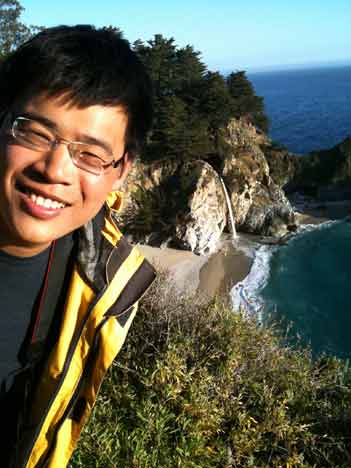RESIDENTS' CORNER
DEVELOPING EVLP TO REPAIR DONOR ORGANS
Jonathan Yeung will start thoracic surgery residency in
July of 2013. He has completed 4 years of clinical general
surgery, and 4 years of surgical science, leading to a
PhD in Shaf Keshavjee’s lab.
“It was serendipitous for me to work on the Ex - Vivo
Lung Perfusion (EVLP) program. As a junior resident,
Michael Johnston and Yaron Shargall redirected my
interest to thoracic surgery. During a thoracic surgery
elective, Shaf asked me to take a look at the ex vivo studies
and ultimately gave me the ex vivo perfusion project
for my thesis problem. I have been lucky to be part of
the leading edge of that translational research. I got to
see it move from studies in pigs to being the standard of
care for human patients. Now people come from around
the world to learn it.
“Clinical Donation after Cardiac Death (DCD) took
off when I was in the lab. One of the reasons the lungs
are ideal for DCD is that they can be ventilated during
retrieval. Giving oxygen directly makes them more resilient
during the time spent in a cardiac-arrested donor.
The major theoretical advantage of DCD is that it avoids
the cytokine and adrenergic storm of brain death. The
disadvantage is that there is no good way to evaluate the
lungs immediately prior to organ retrieval due to the lack
of circulation. Placing the lungs on the EVLP circuit
after they are retrieved provides a solution to this problem.
While on the EVLP circuit, lung function can be
assessed prior to making a final decision to implant them
into a recipient. We found that evaluation based on PO2
isn’t entirely adequate due to the use of an acellular perfusate
and so we defined physiologic evaluation parameters
for use during EVLP. Even more importantly, we
showed that EVLP could be paired with repair strategies
such as gene therapy to improve the function of injured
donor lungs. The take-away from this is that donation
can be expanded because we can check all donor lungs,
even those initially judged to be ‘too injured to utilize’.
Those deemed ‘still too injured’ can be treated using
specific ex vivo therapies tailored to those injuries.”
|

Jonathan Yeung in Big Sur, California
Jonathan grew up in Calgary, where his father, a Hong
Kong native, is a Professor of Plant Biology. As a math
and science student, Jonathan initially chose to study
biochemistry and did research with the Alberta Heritage
Program on streptavidin-biotin interactions. His role
models have been Michael Johnston, Yaron Shargall,
and Shaf Keshavjee. He was encouraged by Ori Rotstein
to get into research. His wife, Andrea Wan, is an interventional
paediatric cardiologist. The latest book he read
was The Art of Racing in the Rain by Garth Stein.
M.M.
|